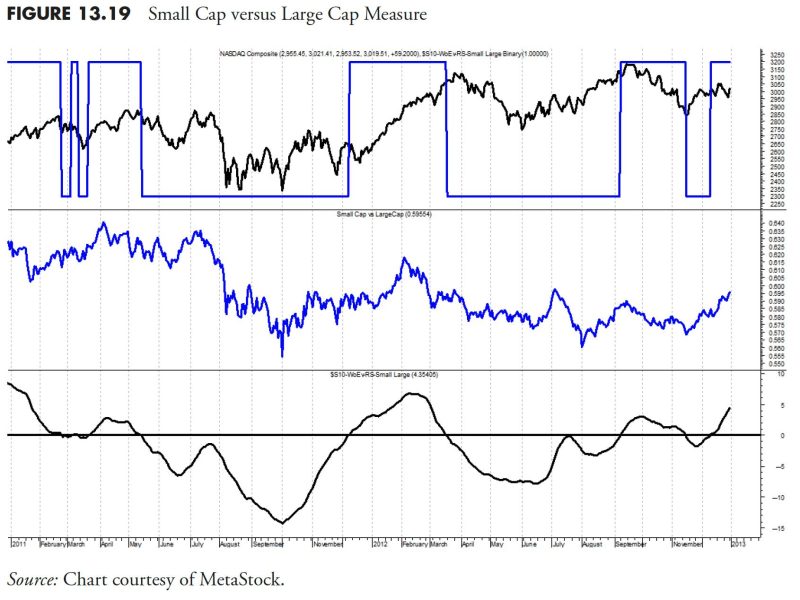May 3, 2024
Mastering Money Management: Unleashing the Power of Relative Strength and Beyond – Part 3
 Relative Strength and Other Measures in Rules-Based Money Management
Relative strength analysis plays a crucial role in rules-based money management strategies. By focusing on relative strength, investors can gain insights into the performance of various securities relative to each other and the market as a whole. This approach allows investors to make more informed decisions about where to allocate their capital, based on the relative performance of different assets.
One common measure used in relative strength analysis is the relative strength index (RSI). The RSI measures the speed and change of price movements and is often used to identify overbought or oversold conditions in a security. By monitoring the RSI of different securities, investors can identify potential opportunities based on the strength or weakness of a security relative to others.
Another important measure in rules-based money management is the Sharpe ratio. The Sharpe ratio measures the risk-adjusted return of an investment and helps investors evaluate the return they are getting relative to the risk they are taking. By comparing the Sharpe ratios of different investments, investors can make more informed decisions about where to allocate their capital based on the risk-adjusted return potential of each investment.
Volatility is a key factor that investors consider when implementing rules-based money management strategies. Volatility measures the degree of variation of a trading price series over time and is often used to assess the risk of an investment. By analyzing the volatility of different securities, investors can make decisions about how to allocate their capital based on their risk tolerance and investment objectives.
Correlation analysis is another important tool in rules-based money management. Correlation measures the relationship between two variables and is often used to assess the diversification benefits of a portfolio. By analyzing the correlation between different securities, investors can determine how adding a security to their portfolio may impact the overall risk and return characteristics of their investments.
In conclusion, relative strength and other measures play a significant role in rules-based money management strategies. By analyzing factors such as relative strength, Sharpe ratio, volatility, and correlation, investors can make more informed decisions about where to allocate their capital and achieve their investment objectives. By incorporating these measures into their rules-based money management strategies, investors can enhance their decision-making process and improve their overall investment performance.
Relative Strength and Other Measures in Rules-Based Money Management
Relative strength analysis plays a crucial role in rules-based money management strategies. By focusing on relative strength, investors can gain insights into the performance of various securities relative to each other and the market as a whole. This approach allows investors to make more informed decisions about where to allocate their capital, based on the relative performance of different assets.
One common measure used in relative strength analysis is the relative strength index (RSI). The RSI measures the speed and change of price movements and is often used to identify overbought or oversold conditions in a security. By monitoring the RSI of different securities, investors can identify potential opportunities based on the strength or weakness of a security relative to others.
Another important measure in rules-based money management is the Sharpe ratio. The Sharpe ratio measures the risk-adjusted return of an investment and helps investors evaluate the return they are getting relative to the risk they are taking. By comparing the Sharpe ratios of different investments, investors can make more informed decisions about where to allocate their capital based on the risk-adjusted return potential of each investment.
Volatility is a key factor that investors consider when implementing rules-based money management strategies. Volatility measures the degree of variation of a trading price series over time and is often used to assess the risk of an investment. By analyzing the volatility of different securities, investors can make decisions about how to allocate their capital based on their risk tolerance and investment objectives.
Correlation analysis is another important tool in rules-based money management. Correlation measures the relationship between two variables and is often used to assess the diversification benefits of a portfolio. By analyzing the correlation between different securities, investors can determine how adding a security to their portfolio may impact the overall risk and return characteristics of their investments.
In conclusion, relative strength and other measures play a significant role in rules-based money management strategies. By analyzing factors such as relative strength, Sharpe ratio, volatility, and correlation, investors can make more informed decisions about where to allocate their capital and achieve their investment objectives. By incorporating these measures into their rules-based money management strategies, investors can enhance their decision-making process and improve their overall investment performance.
If you would like to delve into the world of investment topics , go to our partner project Wall Street Wizardry


